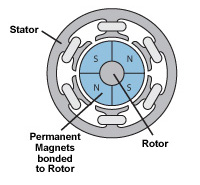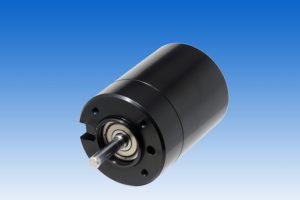The term brushless dc motor (or BLDC motor) is common lingo in the industrial world. The question is, does it make any sense?

Perhaps a little history can help here. The first brushless dc motors were marketed as such because they functioned as drop-in replacements for brush dc motors. There were a number of technological innovations that brought on BLDC motors. One was the availability of solid state switching devices in the 1960s. This allowed the commutation that brushes performed in brush dc motors to be done electronically, eliminating the need for brushes. A second innovation was the advent of new, stronger permanent magnets in the 1980s, which made the motors more powerful.
Functionally, a BLDC motor operates like a dc motor in one important sense; it has a dc input. This dc input is then converted to ac which excites the motor circuit. And there is the reason why many consider the brushless dc designation a misnomer, arguing that in effect the motor is truly a permanent magnet synchronous ac motor.
Still, the name lives on. As a way of distinguishing between different motors that are powered from dc sources, it may still be helpful to speak in this way. For instance, most taxonomies divide motors into ac and dc, with the latter subdivided into brush and brushless motors. This could also be simple inertia, (and by “inertia” we don’t mean the definition used in physics but rather the one having to do with human force of habit) with little justification from a technical point of view.
So, weigh in; what do you think of the BLDC designation? Should it stay or should it go?
Click here for more information on the basics of BLDC motors.








Leave a Reply
You must be logged in to post a comment.